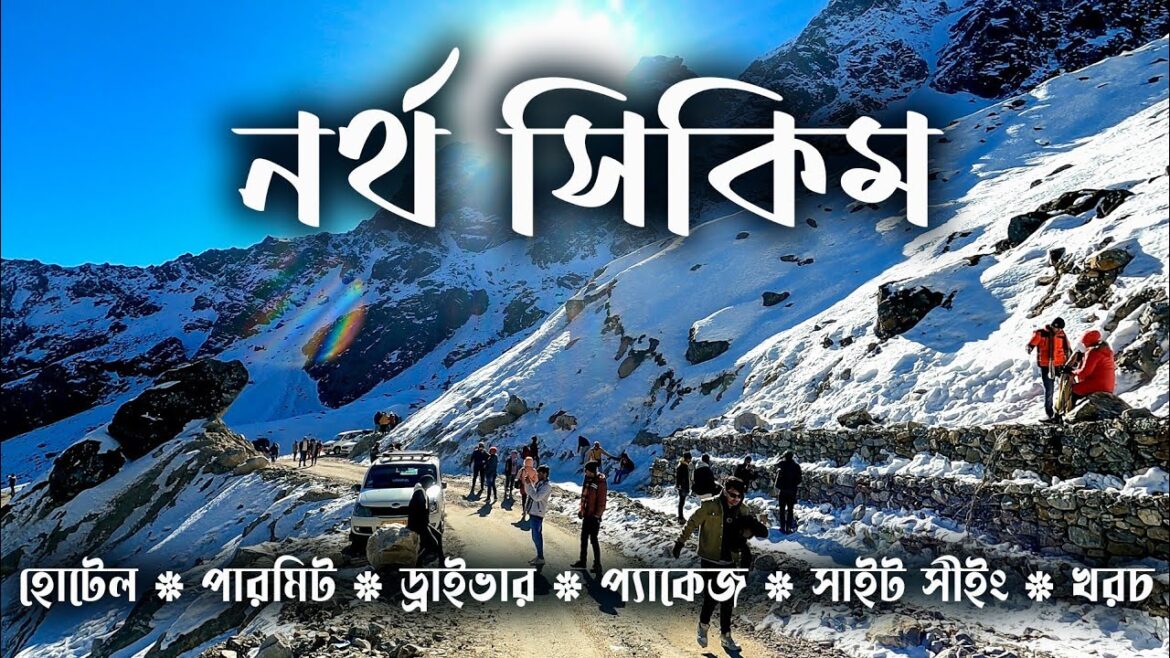Sikkim (/ˈsɪkɪm/; Nepali pronunciation: [ˈsikːim]) is a state in Northeastern India. It borders the Tibet Autonomous Region of China in the north and northeast, Bhutan in the east, Province No. 1 of Nepal in the west and West Bengal in the south. Sikkim is also close to the Siliguri Corridor, which borders Bangladesh. Sikkim is the least populous and second smallest among the Indian states. Situated in the Eastern Himalaya, Sikkim is notable for its biodiversity, including alpine and subtropical climates, as well as being a host to Kangchenjunga, the highest peak in India and third highest on Earth. Sikkim’s capital and largest city is Gangtok. Almost 35% of the state is covered by Khangchendzonga National Park – a UNESCO World Heritage Site.
The Kingdom of Sikkim was founded by the Namgyal dynasty in the 17th century. It was ruled by Buddhist priest-kings known as the Chogyal. It became a princely state of British India in 1890. Following Indian independence, Sikkim continued its protectorate status with the Union of India after 1947, and the Republic of India after 1950. It enjoyed the highest literacy rate and per capita income among Himalayan states. In 1973, anti-royalist riots took place in front of the Chogyal’s palace. In 1975, after the Indian Army took over the city of Gangtok, a referendum was held that led to the dissolution of the monarchy and Sikkim joining India as its 22nd state.
Modern Sikkim is a multiethnic and multilingual Indian state. The official languages of the state are English, Nepali, Sikkimese and Lepcha.Additional official languages include Gurung, Limbu, Magar, Mukhia, Newari, Rai, Sherpa and Tamang for the purpose of preservation of culture and tradition in the state.[3] English is taught in schools and used in government documents. The predominant religions are Hinduism and Vajrayana Buddhism. Sikkim’s economy is largely dependent on agriculture and tourism. As of 2019, the state had the fifth-smallest GDP among Indian states,[11] although it is also among the fastest-growing.
Sikkim accounts for the largest share of cardamom production in India, which is the world’s second largest producer of the spice after Guatemala. Sikkim achieved its ambition to convert its agriculture to fully organic between 2003 and 2016, and became the first state in India to achieve this distinction. It is also among India’s most environmentally conscious states, having banned plastic water bottles “in any government functions and meetings” and polystyrene products (throughout the state).


28 Comments
এত তথ্য সমৃদ্ধ video এর আগে পাইনি। ধন্যবাদ আপনাকে। আমরা এবছর end of December, North Sikkim যাওয়ার plan করছি।
– আপনি বলতে পারবেন ওই সময় গুরুদংমার লেক কী পুরো বরফে জমে থাকে, নাকি নীল জলও কিছুটা পাওয়া যায়??
– এছাড়া গ্যাংটক থেকে কি ঠিক পরের দিনের permit পাওয়া যায়? নাকি আগে থেকে permit book kore যেতে হয়?
সেপ্টেম্বরের ২০ তারিখ আমরা নর্থ সিকিম এর উদ্দেশ্যে রওনা দিচ্ছি,
ওই সময় কি আমরা নর্থ সিকিমে বরফ দেখতে পাবো?
ওই সময় Weather কেমন থাকে?
প্লিজ একটু কেউ জানান
Achha December er tym e gale North Sikkim valo vabe ghora jabe ?
Dada 4 jon ar gari reserved kore gele kmn khorcha porbe 1 night 2 days..r sharing je 1 night 2 days 1800rs lagche khawa dawa hotel somet
আপনার প্রতিটি প্রতিবেদন অনবদ্য
খুব সুন্দর দারুণ লাগল 🙂❤️
Hello. Very informative video. Is it feasible to visit Sikkim in Mid December Or the temperature will be too low to enjoy. Thank you in advance.
দারুন, সুন্দর অসাধারণ ভিডিও
Wonderful blog, very good coverage, fantastic picture & last but not the least, superb information in this blog. Very much convinced. Keep it up.
Khub ee informative video ❤
খরচের হিসাব দিলে ভালো হতো,জন প্রতি
What will be the cost of the package of 4 people?(reservation)north sikkim
অসাধারণ অসাধারণ খুব ভালো লাগলো ধন্যবাদ 👍❤️❤️
Subahanallah
তোমাদের পরে গিয়েছিলাম zeropoint 15/12/2022
Boss jakhun screen a hotel number dao takhun Aktu soymoy neya screen dakhba…
Kon month a gele snow dekhte parbo dada??
তুমি গুরু সেরা…❤❤..
Hi ❤
আপনার সাথে কথা বলতে চাই
কোন মাসে গিয়েছিলেন জানাবেন।
আপনার ভিডিও গুলো সবই ঠিক আছে, শুধু শেষে কত মোট খরচ হচ্ছে সেটা বলবেন।🎉🎉
Dada kirfi ghora tr kore gale khob vlo laje ami February gachilam 2023 a same jaiga ghure aschi darun jaiga ❤
Dada ami march mase jabo bole bab si . North Sikkim a D S L R niye jete par bo to.
Bangladesh theke jawa jay eishob jaygay?
ভাই, আপনাকে ধন্যবাদ, অনেক কিছু জানতে পারলাম
😮😮😮😮Good
গুরুদম্বা লেকে ছোট বাচ্চা নিয়ে যেতে দেয়?